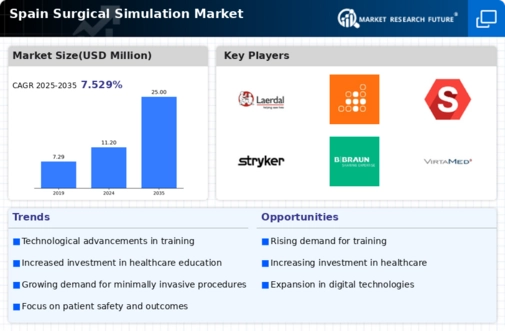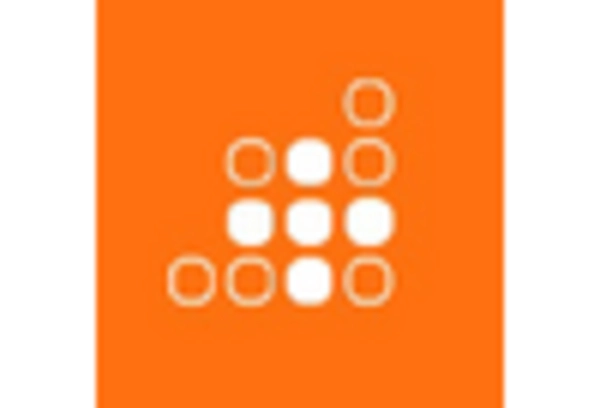Rising Demand for Minimally Invasive Procedures
The surgical simulation market in Spain is experiencing a notable increase in demand for minimally invasive procedures. This trend is driven by the growing preference among patients for surgeries that promise reduced recovery times and lower risks of complications. As healthcare providers adapt to these preferences, the need for advanced training tools becomes paramount. Surgical simulations offer a safe environment for practitioners to hone their skills in minimally invasive techniques. According to recent data, the market for minimally invasive surgeries is projected to grow at a CAGR of 8.5% over the next five years in Spain, further emphasizing the importance of effective training solutions in the surgical simulation market.
Growing Emphasis on Continuing Medical Education
The surgical simulation market in Spain is benefiting from a growing emphasis on continuing medical education (CME) for healthcare professionals. As medical knowledge and technologies evolve rapidly, there is a pressing need for practitioners to stay updated with the latest techniques and procedures. Surgical simulations provide an effective platform for ongoing training, allowing surgeons to refine their skills and learn new methodologies. The demand for CME programs that incorporate simulation training is on the rise, with a projected increase of 15% in participation rates over the next few years. This trend underscores the importance of surgical simulation in maintaining high standards of care in the medical field.
Increased Investment in Healthcare Infrastructure
Increased investment in healthcare infrastructure in Spain is positively impacting the surgical simulation market. As hospitals and medical facilities upgrade their equipment and training capabilities, there is a growing recognition of the value of simulation technologies. Investments are being directed towards acquiring state-of-the-art surgical simulators that enhance training effectiveness. This trend is likely to continue, with an estimated growth of 12% in healthcare spending over the next five years. Such investments not only improve the quality of medical education but also ensure that healthcare professionals are well-prepared to meet the demands of modern surgical practices, thereby driving the surgical simulation market forward.
Integration of Virtual Reality in Medical Training
The integration of virtual reality (VR) technology into medical training is significantly influencing the surgical simulation market in Spain. VR provides immersive experiences that enhance the learning process for medical professionals. By simulating real-life surgical scenarios, VR allows practitioners to practice complex procedures without the associated risks. This technology not only improves skill acquisition but also boosts confidence among surgeons. Recent studies indicate that training with VR can lead to a 30% improvement in surgical performance. As educational institutions and hospitals increasingly adopt VR solutions, the surgical simulation market is likely to expand, catering to the evolving needs of medical training.
Government Initiatives Supporting Medical Education
Government initiatives aimed at enhancing medical education are playing a crucial role in the growth of the surgical simulation market in Spain. Policies that promote the use of advanced training technologies in medical schools and hospitals are fostering an environment conducive to innovation. For instance, funding programs and grants are being allocated to institutions that implement simulation-based training. This support is vital, as it encourages the adoption of surgical simulations, which are essential for preparing healthcare professionals for real-world challenges. The Spanish government has recognized the importance of such initiatives, which could lead to a 20% increase in the adoption of simulation technologies in the coming years.

















Leave a Comment